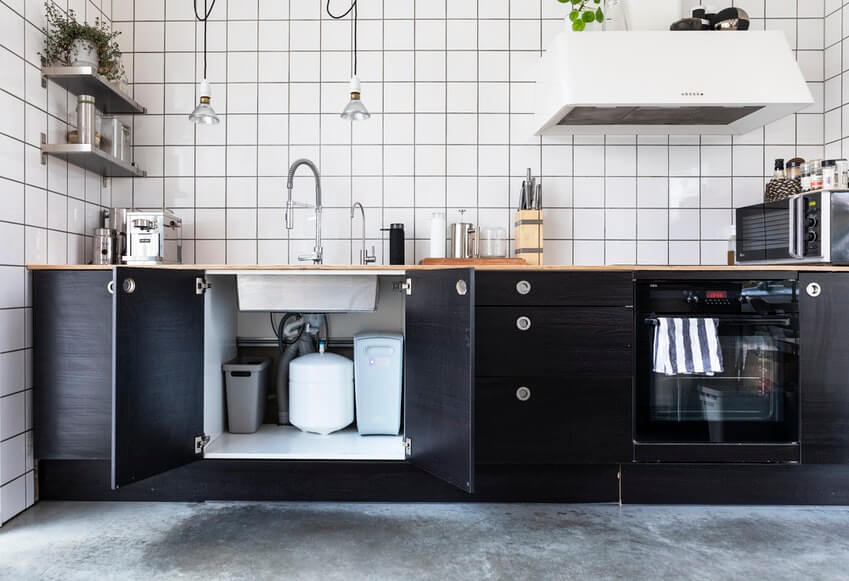Getting a water filter for your home can be a necessity in many parts of America. And it’s not just Flint, Michigan. Many US homeowners can’t get access to clean potable water unless they rely on themselves and use one of the many whole-house water filtration systems available on the market. If you are handy with tools, you can finish the installation in two to four hours.
Even if your “municipal tap water” fits all the safety criteria after being processed by a treatment plant, it still might have an unpleasant odor or a sour taste. If you have a private well on your property, installing a filter could be a health concern. Depending on the type of soil and rock in your area, groundwaters can be easily contaminated and pose a risk to you and your family. Visit waterpeople for more assissance with shower head filter.
Another common issue is “hardness” or the number of minerals, especially calcium carbonate that your drinking liquid contains. It’s more often the case with well or spring water which can even damage the pipes long-term if not being filtered. You can just add water softeners, but they won’t solve other issues, like taste or odor.
Contents
Choosing a filter
Before you proceed with cutting the pipes and doing other plumbing-related work, choose a filter that works best for your predicament. There are several filtration options available, and you are advised to check them out. A randomly selected filter (even the most expensive model) might not be the best fit in your current situation. So, don’t select based on the price alone.
Consider these factors before making a purchase:
- contamination removal;
- the rate of filtration;
- the water quality;
- costs to install and operate;
- the ease of maintenance.
Before selecting a model, get a sample of your water to a lab for analysis. It may contain cysts, parasites, and microbes that can infect your body. There’s plenty of chemicals, including hormones that can be present in your unfiltered drinking water. And the worst of the bunch are heavy metals like arsenic that cause various types of cancer.
Second, you should consider your family’s needs. How many people are living in your household? Based on this number you should choose a model with a certain filtration rate. The maximum rate is measured in liters or gallons. It’s the amount of pure water that a system can produce in 24 hours. If your consumption is larger than the output of a certain model, select a different one, with a better filtration rate.
Third, the filter should help you not just make water safer, but to improve its drinking quality as well. The best systems on the market can balance pH and let some useful minerals come through. Reverse osmosis filters might be overkill for some people because they not just purify the water, but also eliminate healthy microelements.
Fourth, if the model you’ve chosen uses electricity, calculate the amount it will need during a year. You should be better off with an energy-efficient whole house filter. Two other important factors that influence maintenance costs are the price of removable cartridges, and how often you need to replace them. Be warned against buying a cheaper model that uses a lot of electricity and needs its remineralization cartridge replaced every two weeks.
Don’t forget that unless you want to hire a plumber every time you need to remove a cartridge, you should buy a model that is easy to operate and maintain. If it doesn’t require specific tools or knowledge to monitor and service, it’s a great choice.
Installing the filter
Once you’ve chosen the model that works best for you, it’s time to get down and dirty with some DIY plumbing. Follow these steps if you want to install a whole-house filtration system yourself. You can also contact a professional to perform your water filtration system installation if you are unsure of your abilities.
Installing the filter in 7 steps:
- Check whether a given system fits your home requirements.
- Install a pressure valve in your pipe if you have excess water pressure.
- You should connect the filter before your water heater as most filters don’t work with hot water.
- If you have poor water quality, add a pre-filter or a water route bypass system.
- After shutting off the main water supply, turn on the nearest faucet to get rid of the remaining water and air.
- Use a bucket to catch water drops and spills.
- Find a detailed video instruction on YouTube and start your DIY plumbing project.
Conclusion
Getting clean water is a necessity in many parts of the USA. By installing a whole-house water filter you can improve the quality, taste, and odor of your drinking water and keep your family safe. Choose wisely and perform all the installation work carefully. If you are not sure what to do, contact a professional in your area.




